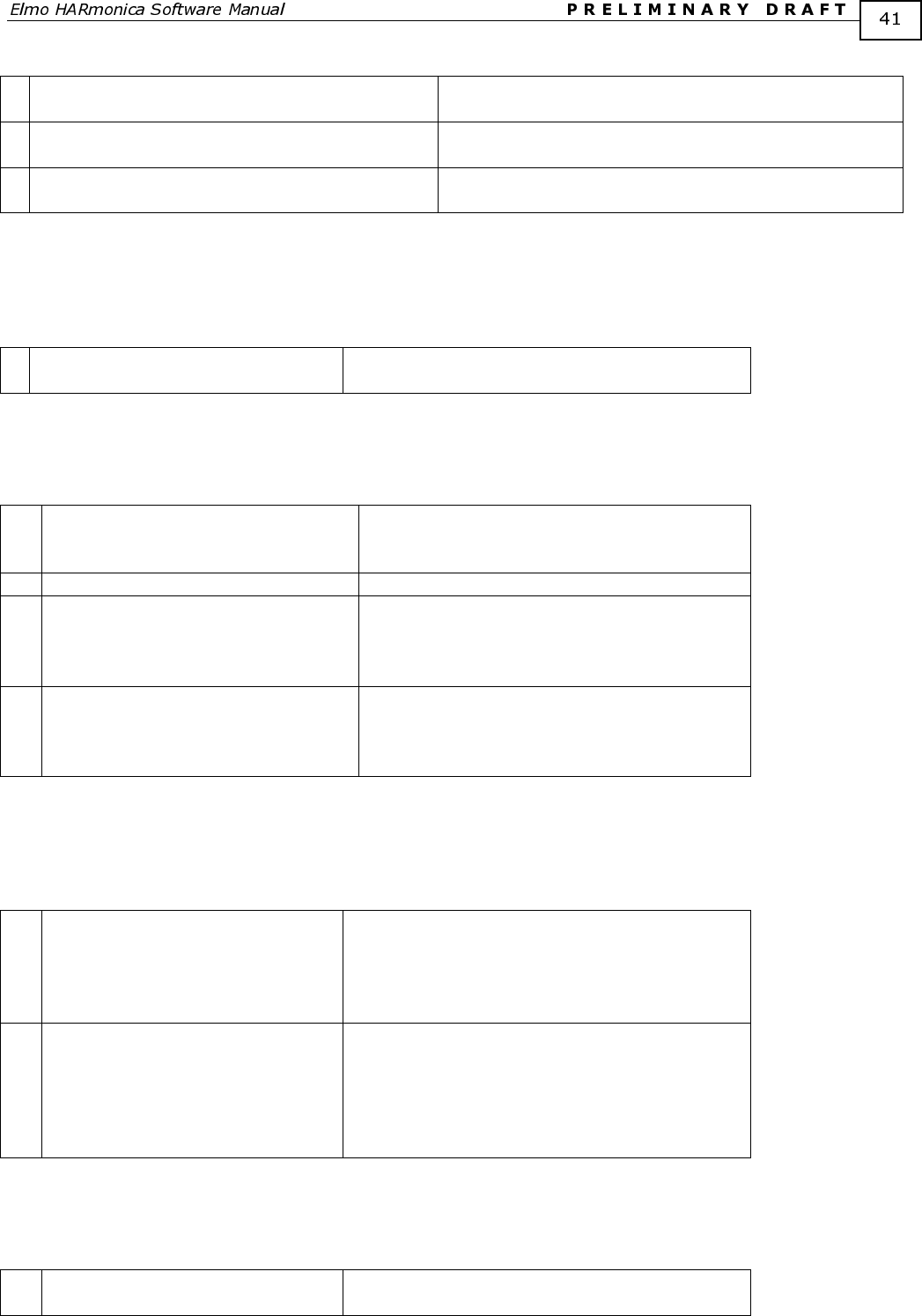
HARSFEN0602
For example,
2
function func2 (struct float x1) This function is named func2, it gets the only input
argument of float type and doesn’t return any output.
3
[int y1] = func3 (int x1)
This function declaration is illegal, because keyword
function is absent
4
function y1 = func5 This function prototype is illegal, because type of the
output variable is absent.
The valid function name observes the same rules as the variable name. It must be distinct from any variable,
function or label name.
Definition of dimensions of the output and input arguments at the function declaration is illegal.
For example,
5
function [int x[100]] = func3 () This function declaration is illegal, because
dimension of output argument is defined.
Function may have prototype before its declaration. The prototype has the same syntax with function
declaration, but it must end with semicolon.
For example,
6 function [float y1] = func4 () ;
This is prototype of function func4 that doesn’t
has any input argument and returns the only
output argument
7 function float y1 = func4 ; It’s the same as the previous example 6.
8 function float = func4 ;
This function prototype is the same as example
6 and 7. Name of input or output argument of
the function prototype may be absent, while
during definition of the function it’s error.
9 function [int, int] = func1 (float, int) ; This is prototype of the function from the
example 1. It’s the same as
function [int y1, int y2] = func1 (float x1, int
x2) ;
It is allowed to write the prototype of the same function several times (multiple prototype), but all these
prototypes must be identical. The names of the input/output arguments in the function prototype may be
omitted, or may be different from the name of the corresponding argument names in the function declaration.
For example,
10 function [int y1, int y2] = func
(float x1, int x2) ;
function [float y1, int y2] = func
(float x1, int x2)
The first expression is the function prototype and
the second is the function definition.
It’s not legal, because types of the first output
argument in the prototype and declaration do not
match.
11 function [int y1, int y2] = func
(float x1, int x2) ;
function [int a, int b] = func (float
x1, int x2) ;
function [int y1, int y2] = func
(float x1, int x2)
The first two expressions are the function
prototype and the third is the function definition.
It is legal
Body of a function resides below the declaration and must end with the keyword return. If the keyword
return is inside some control block within the function body, it is not the end of the function body.
For example,
12 function [int y1, int y2] = func
(float x1, int x2)
** Function definition.


















